Homeschooling differently-wired kids isn’t always a peaceful or purposeful endeavor. Plan Your Year is a homeschool planning resource guide perfect for families raising and teaching quirky, talented, differently-wired kids.
This post contains affiliate links and a review of the homeschool planning guide Plan Your Year. I was provided with a copy for review and compensated for my time. All opinions are my own.
Nothing is “typical” when you are homeschooling differently-wired kids. Even the simplest aspects of a daily routine can become more complicated:
- The noise at co-op led to a sensory meltdown. That afternoon math lesson you had scheduled? Not gonna happen today.
- An offhand remark led to an anxiety trigger. You were doing a read aloud. Now, you’re rocking a panicked seven-year-old on the couch.
- The history book has some pretty complex chapters. He stumbled over one too many sentences, and now he’s raging about being no good.
I’ve been there. In fact, one of my most vivid memories involves a homeschool day derailed by a deficit in differently-wired management.
It involved shards of a broken pencil, a projectile missile, and a clear, desperate proclamation of:
“I hate this. This book is stupid. Don’t you realize I don’t know how to read?!?!?”
Years ago, if you had asked me why I homeschool, I could have given you a perfect answer. Now I can barely put two coherent sentences together, never mind explain our educational choices in two minutes or less.
Our journey has been difficult. We’ve been overscheduled, overburdened, and overanxious to the extreme. Each one of my children has unique, intense needs born of their divergent wiring.
The stress is difficult for me to manage.
For the children, it can be damaging.
Enter Plan Your Year, the Homeschool Planning Guide Built for Purpose and Peace
If you’ve done even the smallest amount of research into the homeschool world, you’ve probably heard of Pam Barnhill. A former educator and veteran homeschooler, Pam has become a beloved authority on homeschooling with purpose and peace. Pam offers a variety of resources on her site that have worked well for my quirky kiddos. But Plan Your Year is my personal favorite.
It’s the most supportive, informative homeschool planning guide I’ve ever encountered, and I come back to it time after time.
What Plan Your Year is Not
Plan Your Year is not a traditional homeschool planner.
While the book does contain a variety of schedule templates, calendars, lists, and the like, the bulk of the material focuses on building an effective homeschool environment with your family’s unique constellation as priority one. Throughout the course of the 178-page guide book, Pam leads her readers through the development of a well-planned homeschool that not only accomplishes your dreams for your children –
it also complements your family’s needs, hopes, and desires.
Chapter One: Cast a Vision
I’ve talked before about the value of a Family Mission Statement. Pam takes this one step further by applying the concept to your homeschool:
Homeschooling without a vision is kind of like wandering around in the dark with your hands behind your back and being surprised when you stub your toe. – Pam Barnhill, Plan Your Year
Pam walks you through two types of vision statement planning:
The Outlook Inventory Method, in which you develop a mission based on the people you want your children to be and how you want them to remember their homeschool years,
and The Elevator Pitch Method, in which you develop a short, mission-statement-like paragraph that covers what your homeschool will become.
Because we already have a family mission statement, I chose to use the Outlook Inventory. Plan Your Year includes a reproducible sheet you can use over and over again (I used pencil this first time around so I’d be able to adjust and reuse as necessary next time).
Chapter Two: Craft Effective Goals
Goals are important, especially for differently-wired kids. The growth and development they experience is so much easier to track when you have something tangible to measure it against. This is why I love that Pam states that goals should focus on behaviors, not outcomes, because as she says, “Remember, we are starting with a person here.”
For us, those goals include following through on tasks we might not be interested in and seeing more self-starting behaviors in children who tend to lack academic motivation skills.
Chapter Three: Determine a Course of Study and Purchase Resources
Shopping for curriculum is daunting, overwhelming, terrifying, and a million other things. It’s also expensive – how many times you purchased what you thought would be the perfect solution to your schooling problems only to find yourself posting it to Buy Sell Trade Groups three months later?
Plan Your Year takes the fear out of choosing the right curriculum for your family. Pam focuses first on your chosen course of study (the subjects your children will work on) and then asks you to consider your influences when it comes to educating your kids.
Fortunately, for those of us who get bogged down in the minutiae of homeschooling styles, Plan Your Year provides a clear overview of the different approaches one can take. Each section begins with the method itself (unit studies, Charlotte Mason, classical, etc.) and explains
- the hallmarks of the method
- its touted benefits
- its misunderstandings and perceived drawbracks
- suggested books and curricula
- suggested websites and blogs (with a couple of my friends featured!)
This chapter also includes valuable information on how to discern the right curriculum resources for your family, including
- whether you should borrow, buy used, or buy new
- how to talk to the curriculum provider, and why
- how to discern how much teacher involvement is needed, and how much you want to be involved
- how to determine the true curriculum cost
Chapter Four: Creating Schedules
This is where I struggle the most. Schedules and routines are so important to my children, but I’m terrible at implementing them. Fortunately, this section of Plan Your Year covers three different schedule types and explains how to choose and work with the type that is best for you.
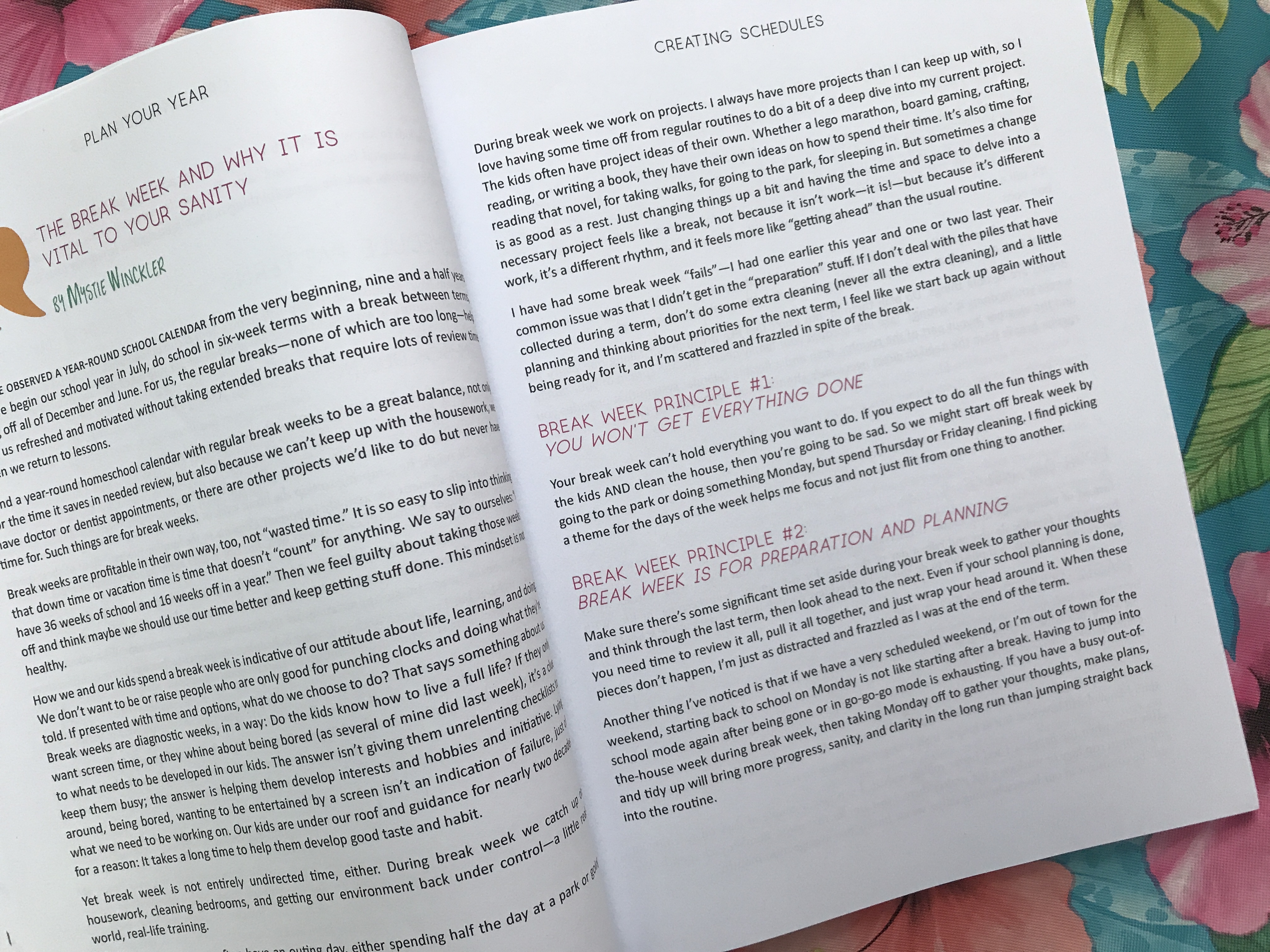
Pam is quick to point out that scheduling a homeschool is a multi-faceted process. One must not only discern the appropriate schedule type (traditional? year-round? calendar year?); one must also determine the appropriate schedule pattern, as well (term? four-day? magic number? block? loop?)
Chapter Five: Planning Weeks and Days
Magical thinking. It’s a hallmark of differently-wired brains, and yes, moms of different kids experience it, too.
For me, magical thinking manifests the most in terms of our daily schedule. I assume I can pack x number of school-related items into a certain unrealistic block of time, then melt when something (an argument, a chore, a mess courtesy of the little guy) throws the whole day off.
Plan Your Year’s solution to this is to allow your homeschool a steady dose of margin. The Action Items for the chapter encourage you to begin by mapping out your weekly commitments outside the home, then dividing the remaining time periods into blocks. This allows you to create a general guideline for when you will do each subject. From there, you can choose a traditional, block, or loop daily schedule.
Chapter Six: Lesson Planning for Homeschoolers
You know what it’s like: you’ve got a plan in your head for how things will go during the school day, and you’ve probably even written down the lessons and page numbers you want to get checked off. But then you sit down to get started and realize you have no specific direction in which you wanted to take the lesson.
What skills are the kids supposed to develop? What outside resources were you supposed to use? How were you going to measure how much work they have actually accomplished?
And then while you’re wondering all these existential questions, differently-wired chaos breaks loose.
This is where lesson planning for homeschoolers comes in.
Plan Your Year differentiates between two different types of lesson planning: Procedure Lists, perfect for open and go curriculum, and the Lesson Plan List, perfect for when you’re building from the ground up or want to add flexibility to an open and go plan. Pam lays out the individual steps for creating each type of list, explaining that by having such a plan in place, you are better able to keep your homeschool day on track.
I can’t keep the chaos from happening, but I am better able to deal with it. All I have to do is open my binder and do the next thing. – Plan Your Year
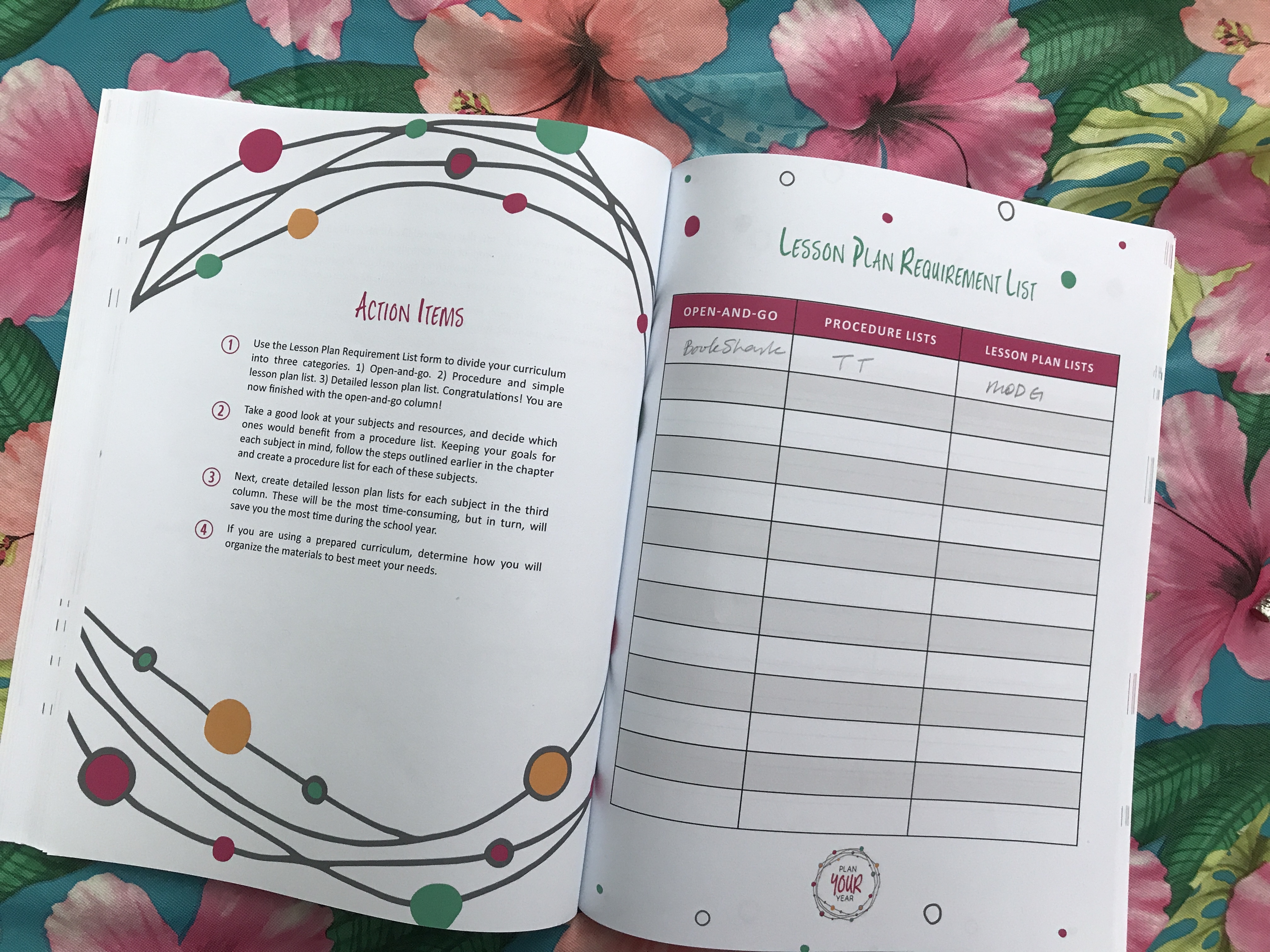
Chapter Seven: Planning Your Own Study
My girls love history.
The eldest is crazy about ancient cultures. Her sister? Early American history is her thing. We love using literature-based curricula for this topic because
A) my girls enjoy stories and reading and
B) it provides a great deal of poppy-related flexibility
One of the difficult things about homeschooling kids who are differently-wired is the pace at which your children work. My kids eat books for breakfast, so our curriculum has to respect that.
I couldn’t find one that fit our needs right of the box, so I adapted one instead.
Plan Your Year devotes an entire chapter to effectively creating such a beast. It explains how to adapt a curriculum or book choice to your unique situation, then quickly and easily develop your own course of study.
Chapter Eight: Organize Your Materials
All your plans are useless if your space is out of whack. As much as I’ve tried to deny it, I’ve come to accept that if our spaces aren’t in order, our daily plans won’t be, either.
Chapter eight is a God-send for those who struggle with executive functioning and “I have to keep everything” disease. (Ahem. Me.) It even covers how to choose the right planner for your personality type in addition to tips for organizing your homeschool space (ie, what to keep, how long to keep it, and where to put everything).
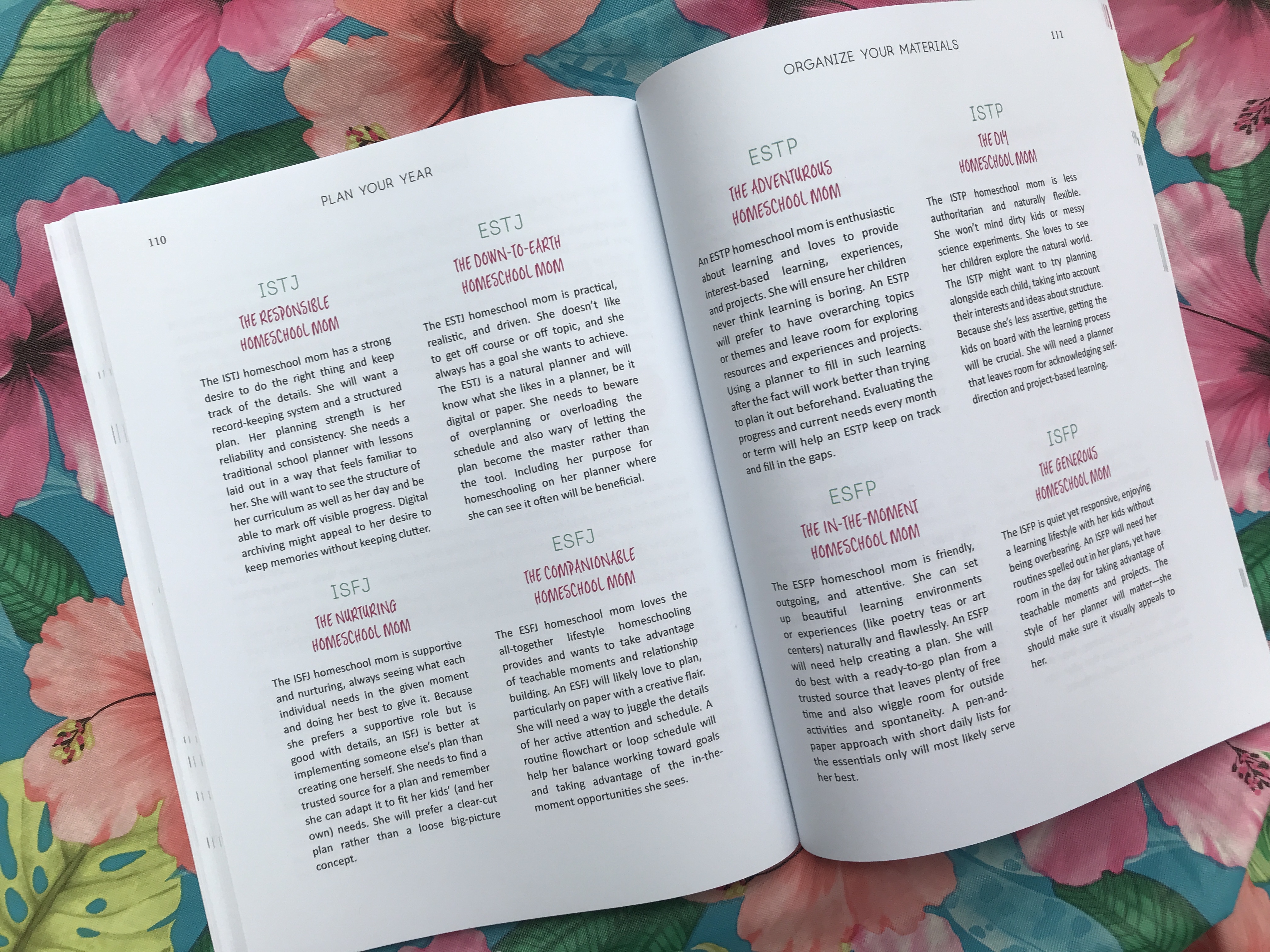
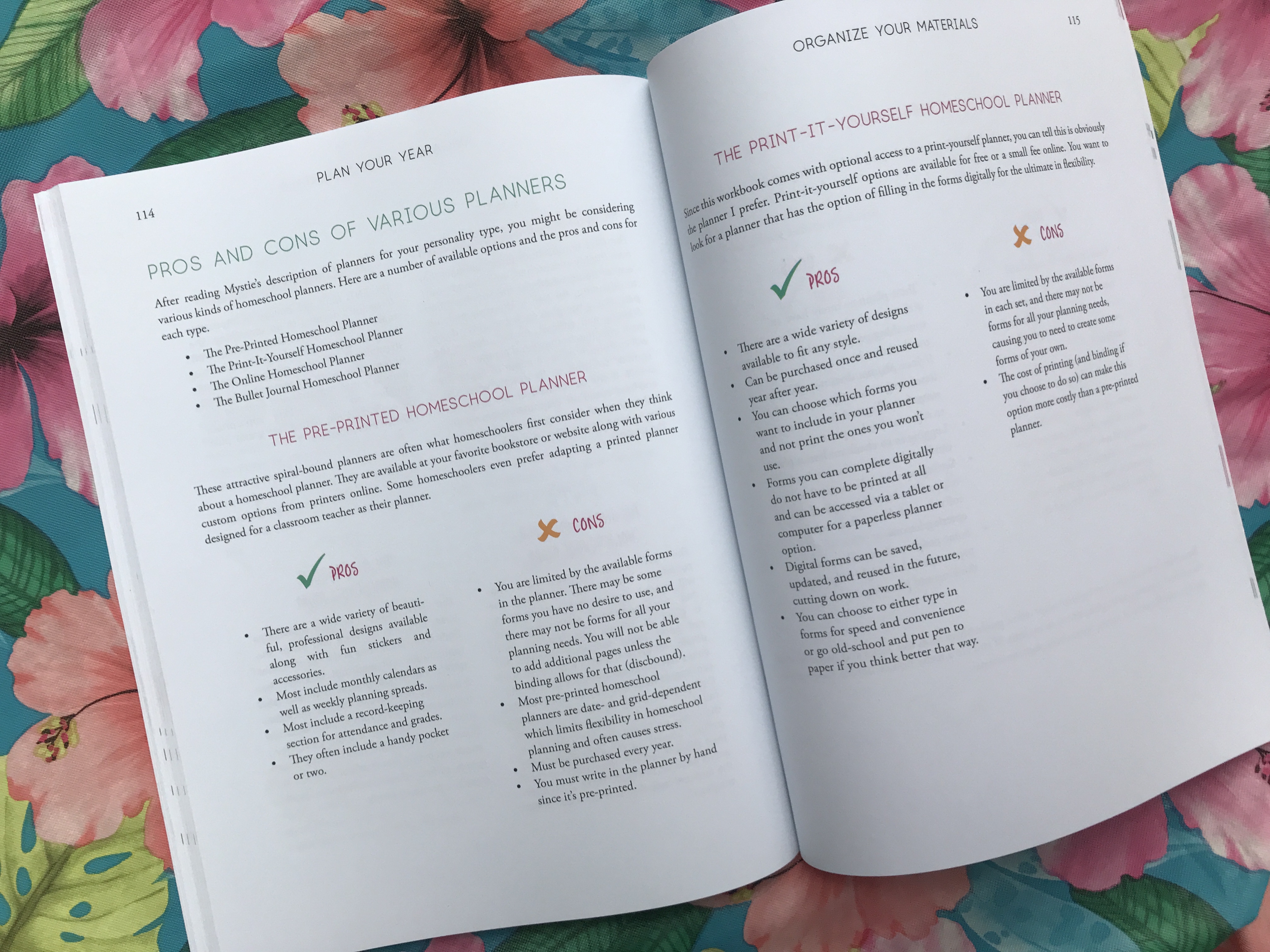
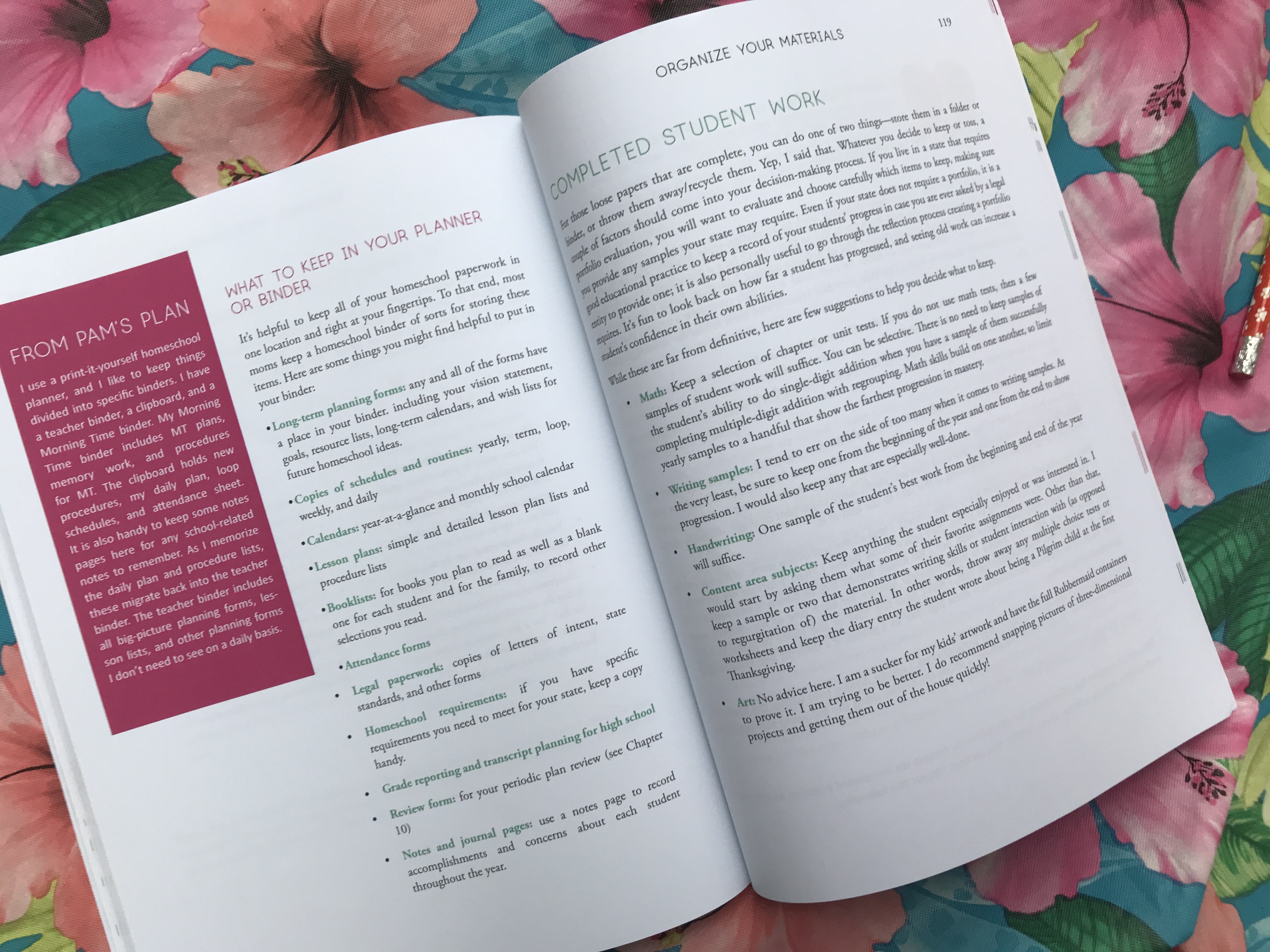
Chapter Nine: Putting it all Together, and Chapter Ten: Planning in Action
Like my eldest, I lack follow through. It’s a skill I’ve tried to develop over the years and a deficit that I contribute to my own differently-wired proclivity for multipotentiality.
So much to do!
So many possibilities to explore!
So many things we can try and enjoy and…get stressed out over when I don’t actually complete them.
That last one.
Yeah. It’s no fun.
This is why the last two chapters of Plan Your Year were so helpful to me. They don’t just give you the ideas for how to plan your year – it gives you the practical steps to follow through.
Like this contributor piece on spiral notebooks from Sarah Mackenzie:
(It’s something I’ve wanted to try but could never quite figure out. Now I have a solid grasp on the method and a clear set of directions to follow.)
And this section on visualization and homeschool review:
It’s the perfect end to a guide full of practical advice and resources, tying all the loose ends in a beautiful bow.
It’s true – nothing is typical when you are homeschooling differently-wired kids.
But Plan Your Year is the kind of homeschool help that recognizes that. It gives you permission to build a homeschool year around the needs, the gifts, and the talents of your family.
It leads you gently to a place of purpose and peace.
[rad_rapidology_inline optin_id=”optin_1″]
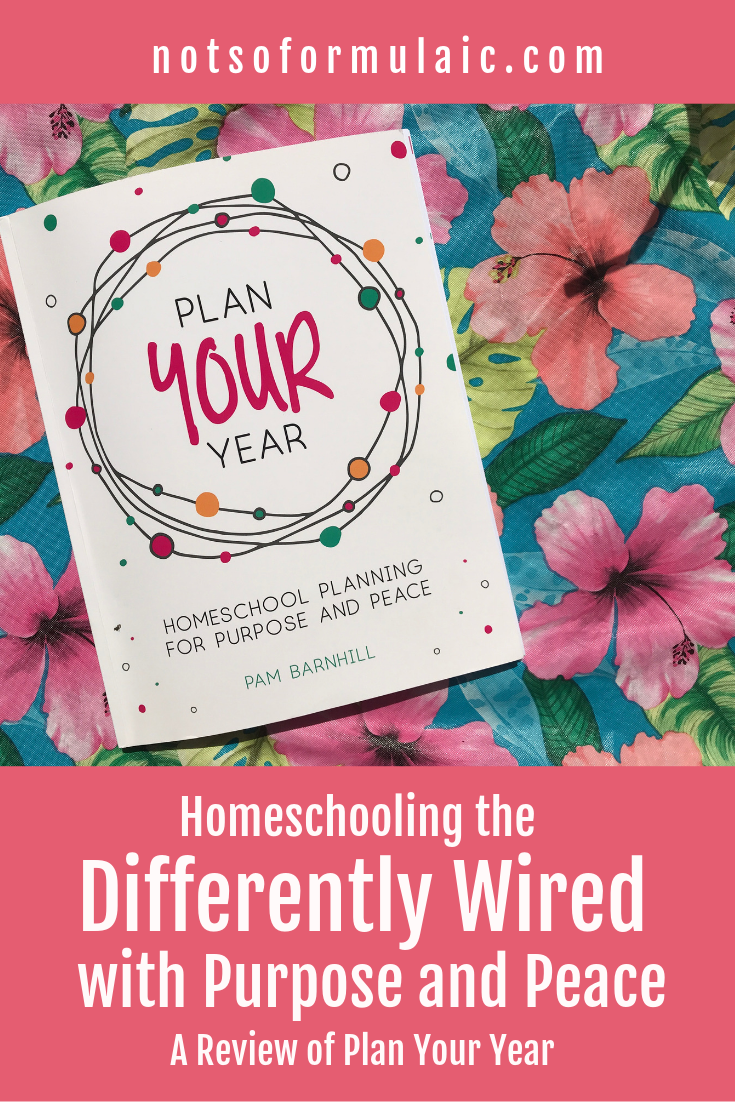


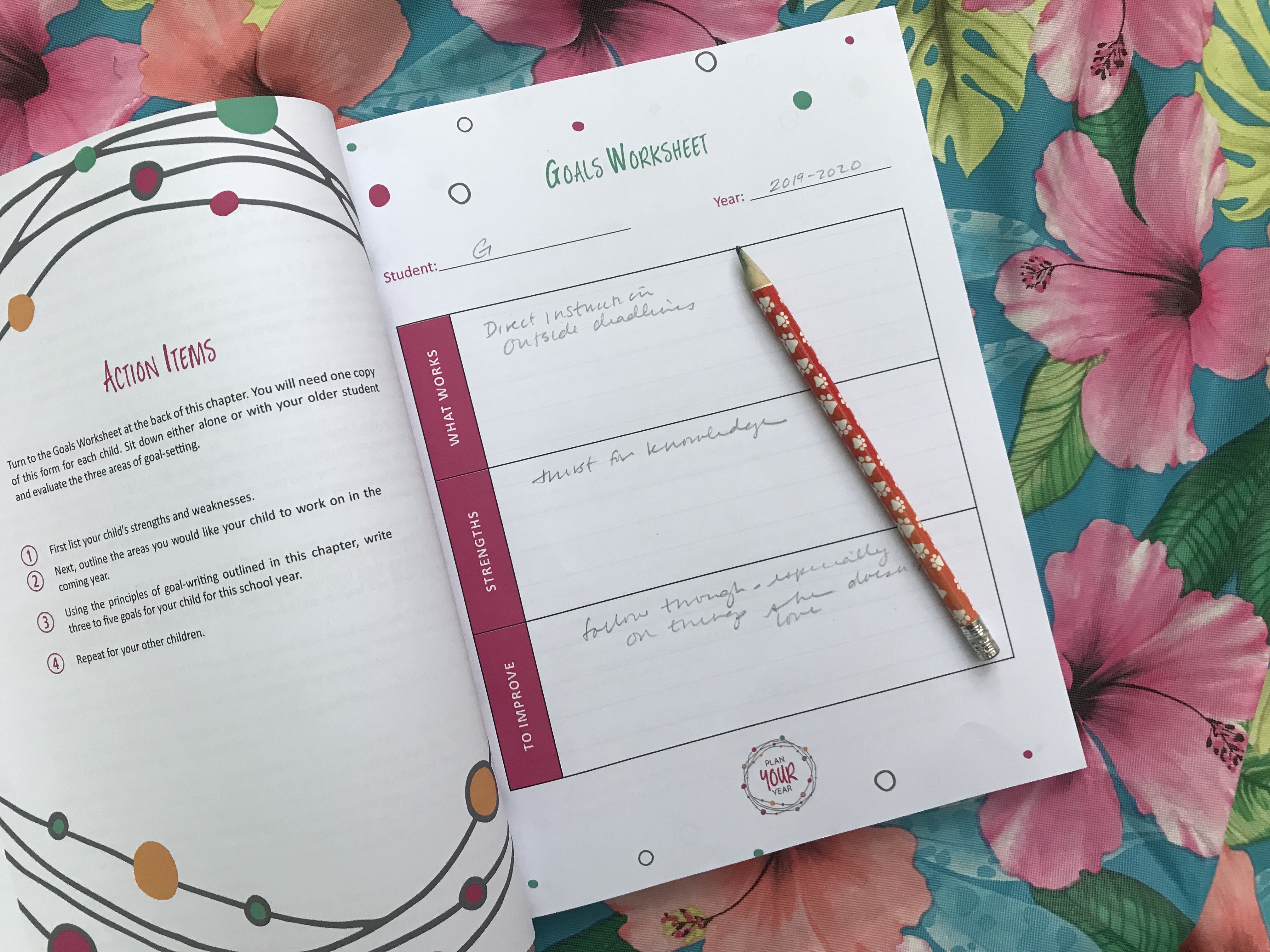

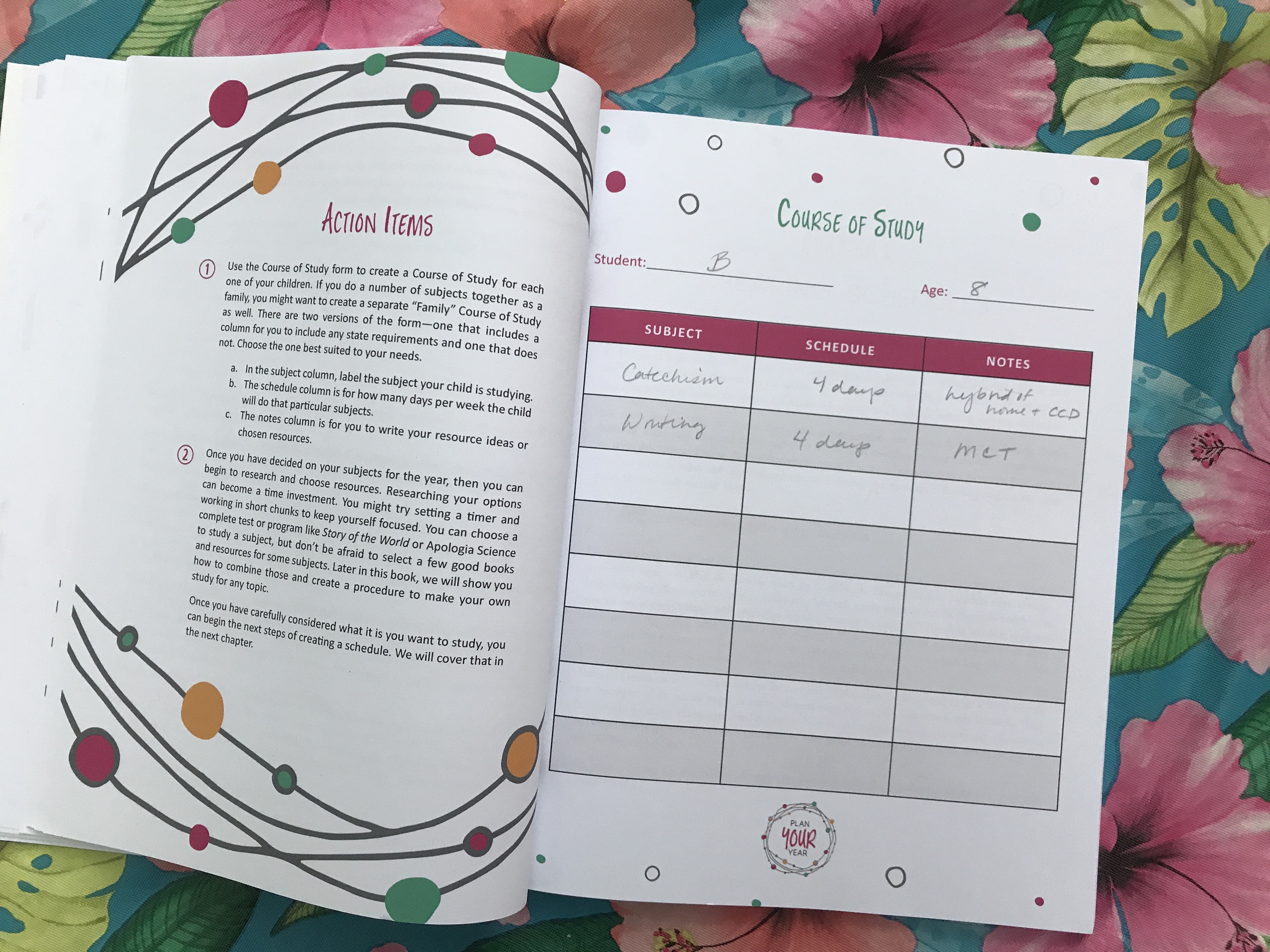


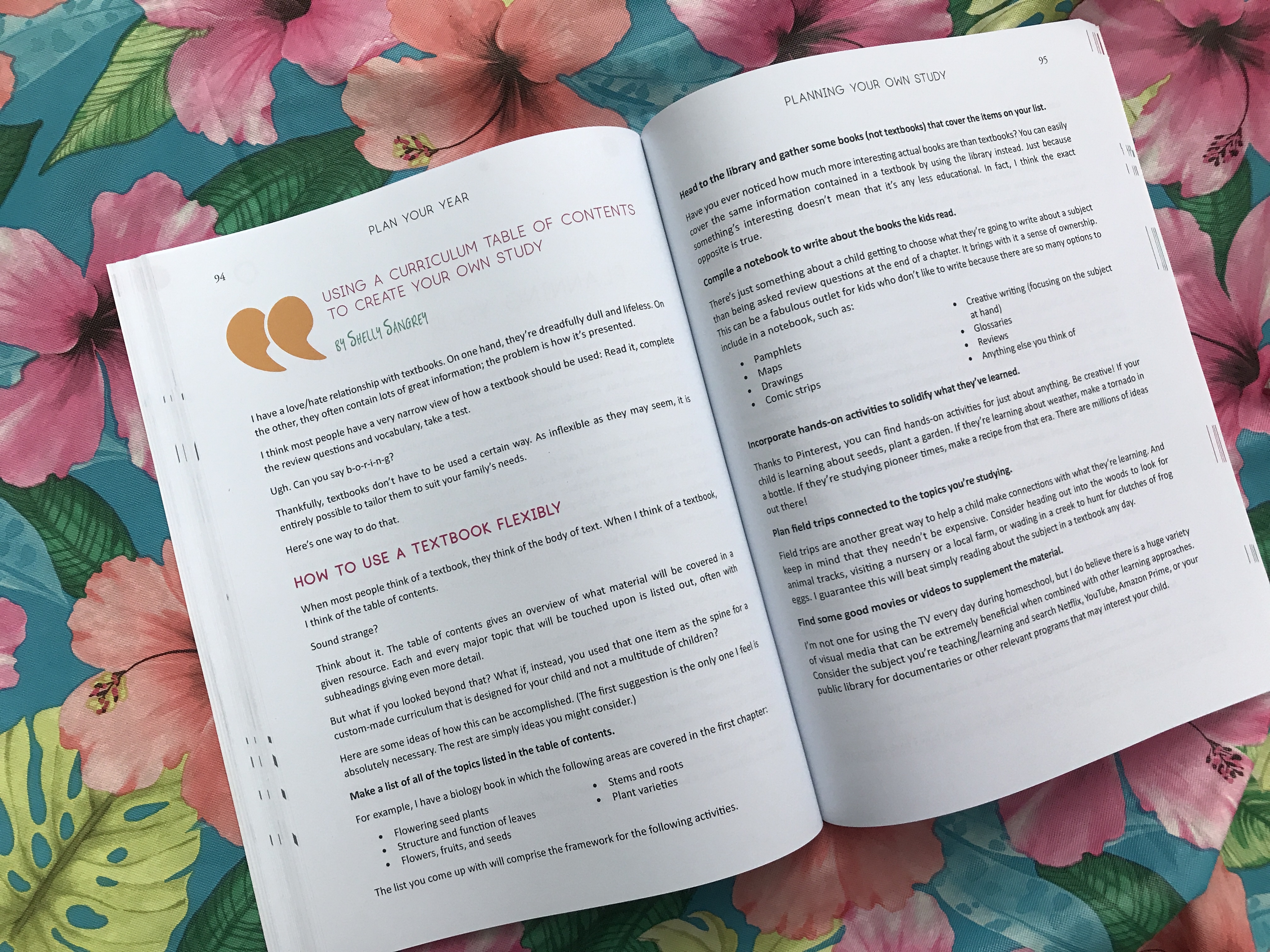
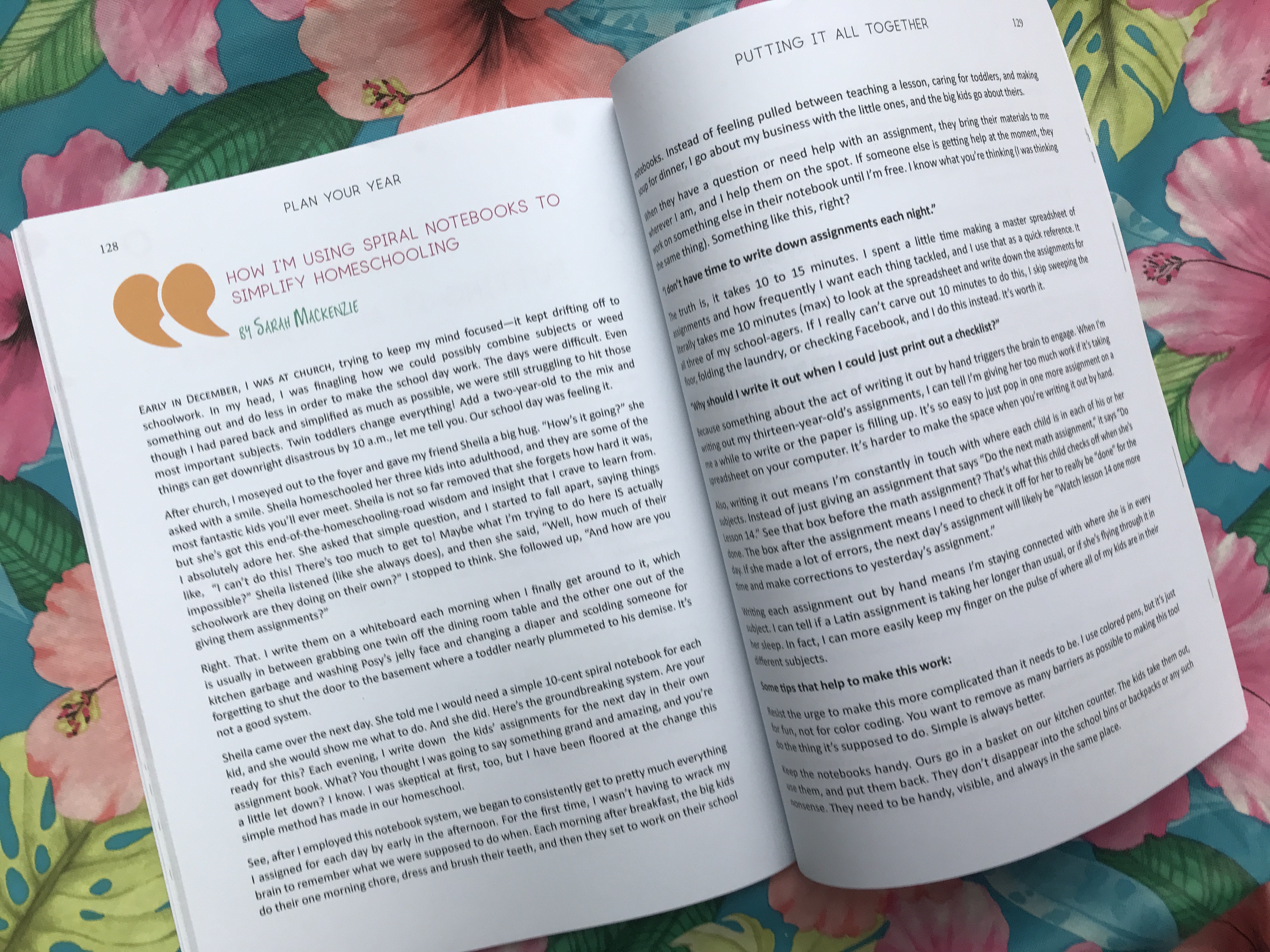
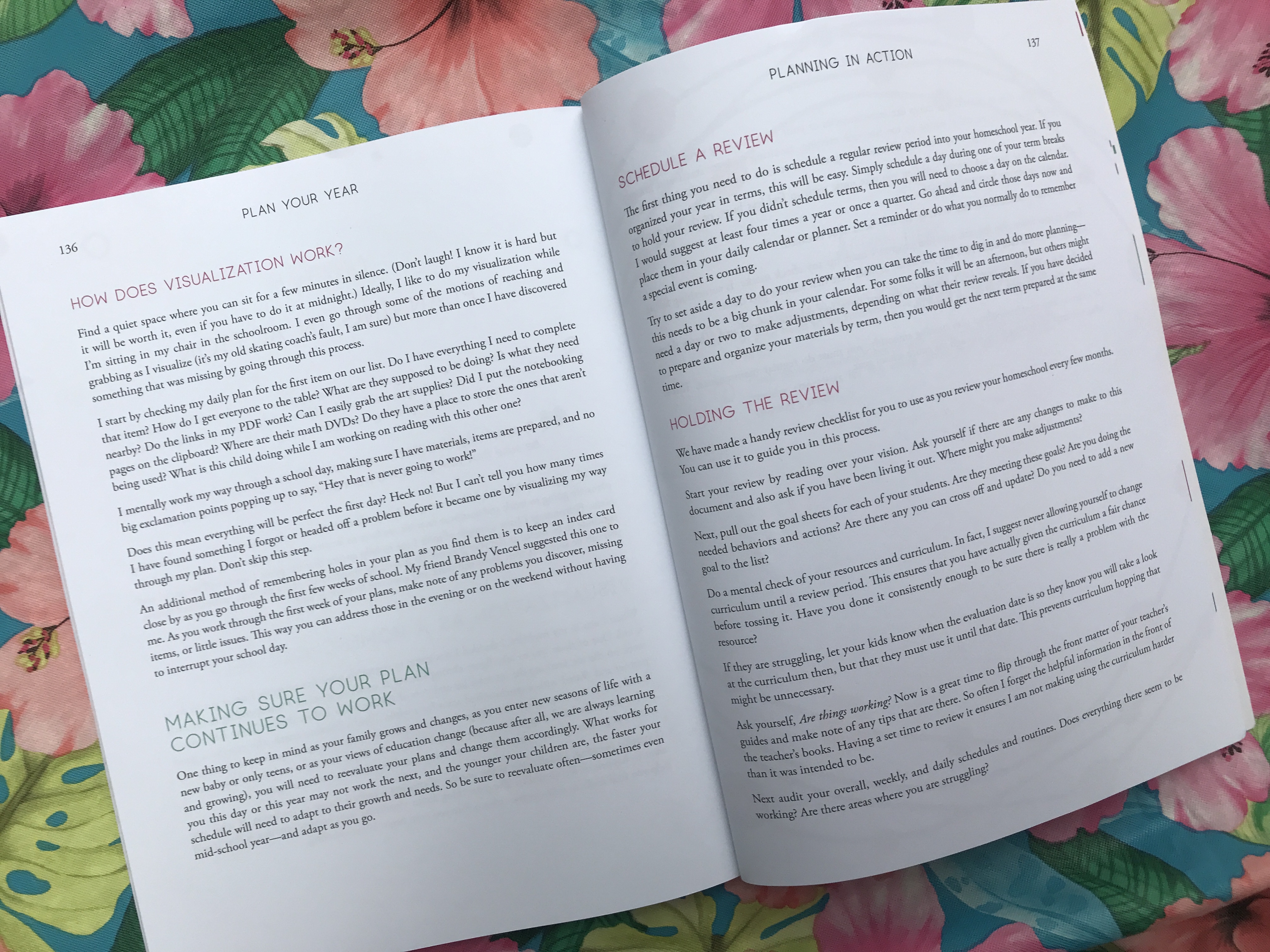
Oh my, I went much further than just calling the Catholic school; I actually enrolled both my school-aged children! But I have been reinspired to continue homeschool for the time being. (Following you on IG as life.of.holley)
I wish you all the best, Holley, and I’ll keep you in my prayers!